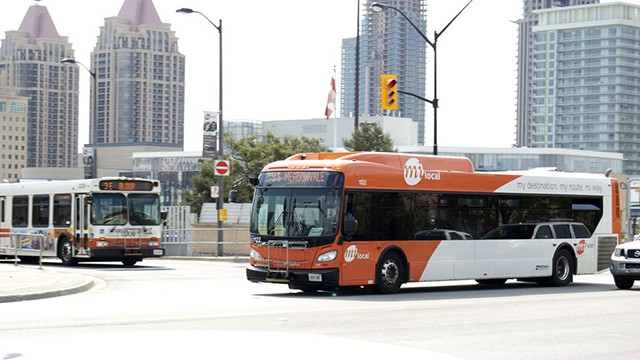Some Residents Are About to Save A Lot of Money on MiWay
Published October 4, 2017 at 8:17 pm

With the cost of living being high for so many people in Mississauga, some lower-income and more vulnerable residents might be happy to hear that public transportation is about to get a lot less costly.
At a recent general committee meeting, MiWay’s proposed Affordable Transportation Pilot Program (ATPP) was approved in principle by Mississauga city council and is on its way to becoming a permanent program in January 2018. Another program also slated to come into effect permanently is the “Senior One Dollar Cash Fare” at off peak times initiative.
Final approval is to follow at the Oct. 11 council meeting.
“Making the affordable transportation program permanent assists residents with low incomes and gives them better access to employment and services,” said Mayor Bonnie Crombie “This program contributes to the City’s strategic goal of ensuring affordability and accessibility. The social and financial return on investment from this program benefits our City and helps keep our communities strong.”
The permanent affordable transportation program is to be based on the phase two pilot that had 1,300 participants.
The pilot was a partnership between the Region of Peel and MiWay and was available to low-income residents in Mississauga.
The second phase of the program was first launched in May 2016 and was subsequently expanded. As part of the initiative, low-income Mississauga residents can apply for discounted public transit fares. The program is open to residents of all ages who earn an income below the low-income measure (LIM) thresholds. So, if you’re a single person who earns $19,930 or less a year, you can qualify.
As for how it works, approved participants are given a specially configured PRESTO card that allows them to purchase a MiWay monthly pass at a 50 per cent discount. In January 2018, priority will be given to eligible participants who remained active during phase two of the pilot.
New participants will be accepted in February 2018.
“The two phases of the affordable transportation pilot helped us develop the program and make it effective,” said Geoff Marinoff, director of transit. “City of Mississauga and Region of Peel staff recommend that the phase two pilot becomes a permanent program for eligible Mississauga residents. The Region will continue to assess the eligibility and MiWay will administer the issuance of PRESTO cards. Financial responsibilities for subsidy and administrative costs will be covered by the Region. MiWay will continue to make the Senior One Dollar Cash Fare available at off peak times.”
As the program continues, it will be maintained by both the region and the city. The region will retain responsibility for screening applicants for eligibility, funding the fare subsidy and administrative costs. MiWay will assume responsibility for PRESTO card administration and transit service delivery.
Peel Regional Council and the City of Mississauga approved the MiWay Affordable Transportation Pilot program following a successful phase one, which was in place from September 2014 to August 2015. Results of phase one found that the program allowed residents with limited financial means to access employment and community services. The results of the phase two (in place from May 2016) show that for every dollar invested, the social return on investment is $3.98.
Seniors will also benefit from this program.
According to the city, the initiative that allows seniors to pay one dollar cash fare at off-peak times will become permanent following approval at council on Oct. 11.
In June 2015, MiWay began offering a one dollar cash fare to seniors during off-peak hours as a pilot program approved by city council. On request, senior riders (age 65+) must present a piece of valid photo identification or a MiWay issued senior identification card to the bus driver to receive the one dollar fare.
For more information, click here and here.
Photo courtesy of the City of Mississauga
insauga's Editorial Standards and Policies advertising





